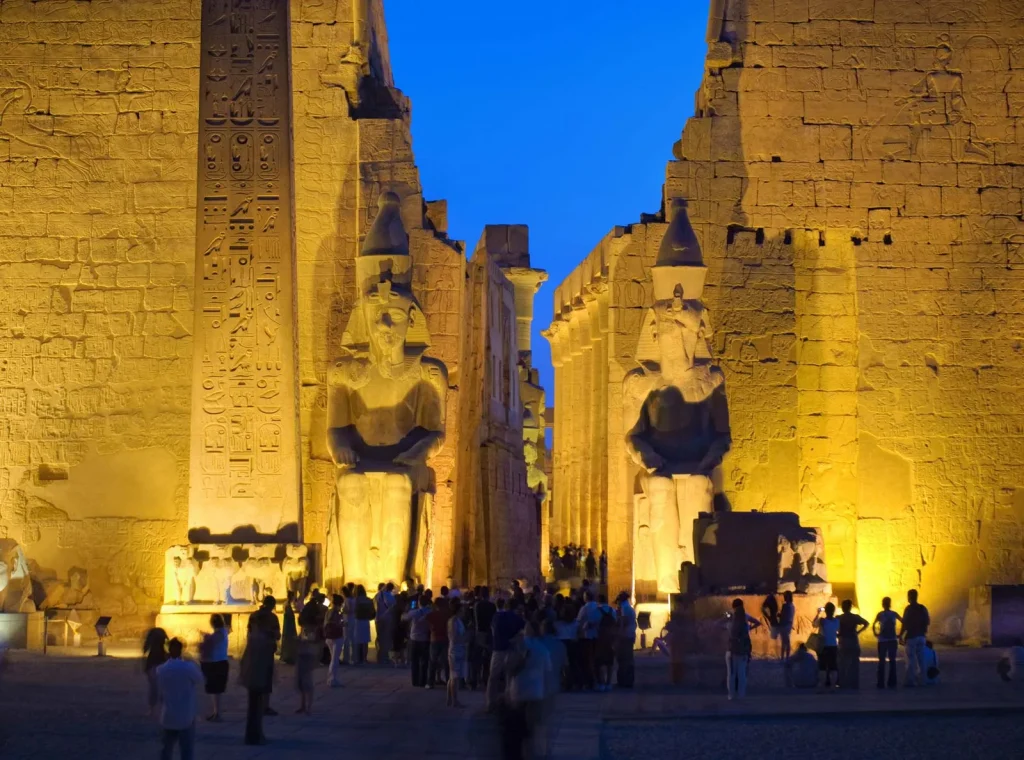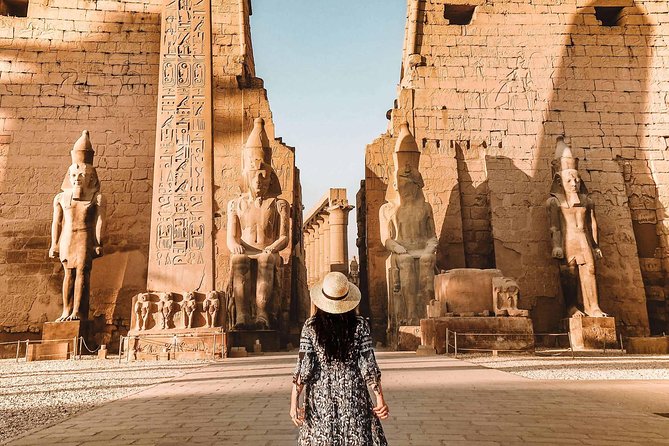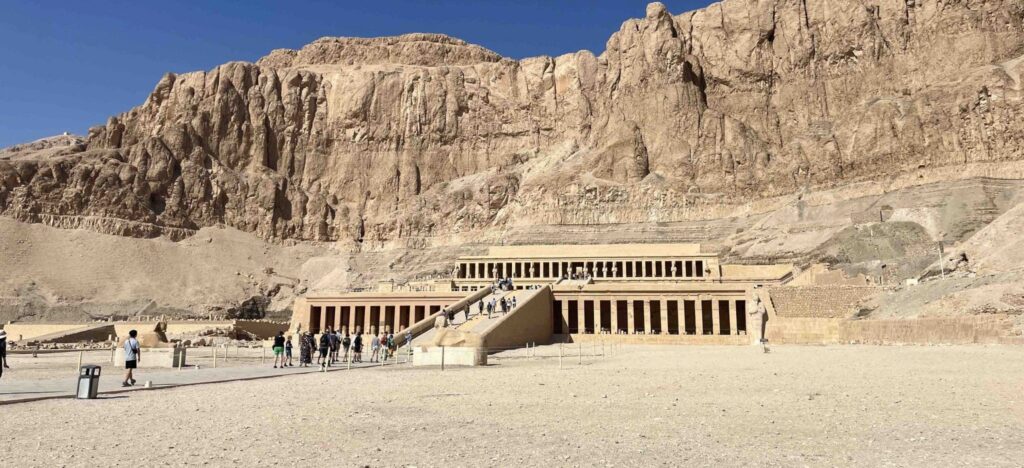Luxor - The Greatest Open-Air Museum in the World
By: Habeeb Salloum/Arab America Contributing Writer

Luxor is the greatest open-air museum on earth, where one can truly appreciate the Ancient Egyptians’ contribution to world civilization. There is no place else on earth where so many ruins are concentrated in this one spot – once named Weset, later changed to Thebes by the Ancient Egyptians.
Homer in his Iliad described Thebes, capital of the Egyptian Empire for a thousand years, as ‘the hundred-gate city for which only the grains of sand surpassed the abundance of wealth contained therein’. When the Arabs came in the 7th century A.D., they saw Thebes’ mass of huge structures and named it al-Qusoor (the castles) from which we get the name ‘Luxor’ – today a city of about half a million.
As a testament to their desire for immortality, the Ancient Egyptians were the only people who wrote manuals for the other world. In Luxor and elsewhere, they built for eternity with sandstone and granite. In the spirit of the everlasting, their still-standing temples and tombs are a mecca for millions of tourists from the four corners of the globe.
Amid the breath-taking splendour of Luxor’s monuments of the pharaohs where imagination overtakes eyesight, thousands upon thousands of these visitors take a thrilling walk through history. Beneath pillars carved with lotus buds and the papyrus plant, past statues of gods and animals, and climbing down into fantastically decorated tombs they are never far away from the early Egyptians and their remains.

Thebes of the Pharaohs was divided into two parts: on the East Bank of the Nile, the City of the Living; and on the West Bank, the City of the Dead. The Karnak and Luxor Temples where the gods lived – two of the 10 temples in the area – greet the sunrise on the East Bank; and the sunset on the West Bank throws shadows over the 400 tombs of Queens and Nobles, located in the Valleys of the Kings. The whole site was organized for those living and for the ones who travelled to the other life.
Guides usually begin their tours on the East Bank at the Karnak Temple complex – to the ancient Egyptians, the most esteemed of places. Covering over 40.5 ha (100 ac) and spanning thirteen centuries, the complex is a massive collection of ruins on which at one time 81,000 people toiled – the largest series of temples ever built in one place. Dedicated to the god Amon-Ra, king of the gods; his consort, Mut; and their son Khonsu, Karnak, is a holy city of colossal statues, hypostyles halls, obelisks, pylons, and shrines.
Past the two gigantic statues of Ramses II, who sired 100 daughters and 65 sons and was the only pharaoh who declared himself a god while still living, one enters the pantheon between two huge pylons. Inside, a 300-ton statue of Ramses II, later usurped by King Pinedjem, stands guard at the entrance to the huge hypostyle passageway. The hall’s colossal 134 columns, 23 m (75 ft) high, have capitals in the form of the lotus plant – atop of each can stand 50 people.

Beyond are many other halls and statues, a sacred lake and three grand obelisks, the ones remaining from the seven that once graced this house of the gods – the other four are in Istanbul, London, New York, and Rome.
The Luxor Temple, 3 km (2 mi) away from Karnak, was once joined to that pantheon by an avenue of ram-headed sphinxes – many of which still remain. However, only a modest section of this passageway has been excavated. The remainder remains under homes and mosques, waiting to be uncovered.
It took 200 years to build the Luxor Temple – a much smaller version of its older twin. In the time of the pharaohs, every year in late August, the marriage of the gods Amon and Mut was celebrated for 15 days. The sacred boat of Amon-Ra, followed by those of Mut and Khonsu, were carried between the sphinxes with music and dancing from his home in Karnak to the Luxor Temple then returned a few days later, amid much merrymaking.
Alexander the Great in the 4th century B.C. expanded the Luxor Temple and later the Christians turned it into a church. By the 12th century, it was a pile of ruins covered by sand. In 1130 A.D., the oldest mosque in Luxor, Abu al-Hajjaj, was built on land covering the top of its lotus capitals. After an adjoining portion of the temple was excavated, the mosque appears to be suspended high above the temple floor.
From the East Bank, we crossed the Nile to the City of the Dead where our guide had planned for us visits to a number of the pharaohs’ tombs and temples. The most important site in this barren burial spot is the ‘Valley of the Kings’ – the necropolis of the great Egyptian sovereigns where some 64 of Egypt’s pharaohs had their palatial resting places hewed into the sheer rock.
Here, the first vault we visited was that of Ramses 1V, the largest in the entire Valley and once used as a Christian church. Among other magnificent decorations, the tomb features scenes from the ‘Book of the Dead’, ‘Book of the Gates’ and ‘Book of Caves’.
A short distance away, we stopped at the famous Tomb of Tutankhamen – the only grave discovered with all its treasures. It was uncovered in November 1922 by the Englishmen Lord Carnarvan and Howard Carter. The tomb’s 4,000-piece rich contents are exhibited in the Egyptian Museum of Antiquity in Cairo.
From the grave of this boy-king, we explored the Tomb of Ramses III, a warrior king who defeated a coalition of ‘sea nations’ and Libyans. Noted for the frescos in its walls depicting life in ancient Egypt from the playing of music to the use of perfumes, it is a very impressive burial chamber.
After visiting the Tomb of Ramses I – the best preserved in the Valley of the Kings – we left for the Valley of the Queens. Here, we stopped at the Temple of Hatshepsut or Deir al-Bahari (Convent of the North) built by Queen Hatshepsut (1501 -1481 B.C.), the most renowned of all the Ancient Egyptian queens and the only woman to govern Egypt as a pharaoh. She ruled the country for 20 years and built the sanctuary in honour of her father, Thothmes, and herself. Consecrated to the goddess Hathor, she called it ‘Splendour of Splendours’. Later, it was converted into a Christian convent and thanks to this, the Temple has been well preserved.
Leaving this imposing shrine, carved into a stone mountain side, we drove to the Colossi of Memnon. These two huge statues, the only remains of the Temple of Amenophis III, became a legend in Greek mythology.
At these deteriorating statues where pharaonic and Greek gods became intermixed, we ended our tour of the city of the Dead – the most important necropolis in human history. It is a spot that has kept alive for thousands of years the history of the pharaohs and their amazing achievements – a place that should be a must on any visitor’s itinerary.



